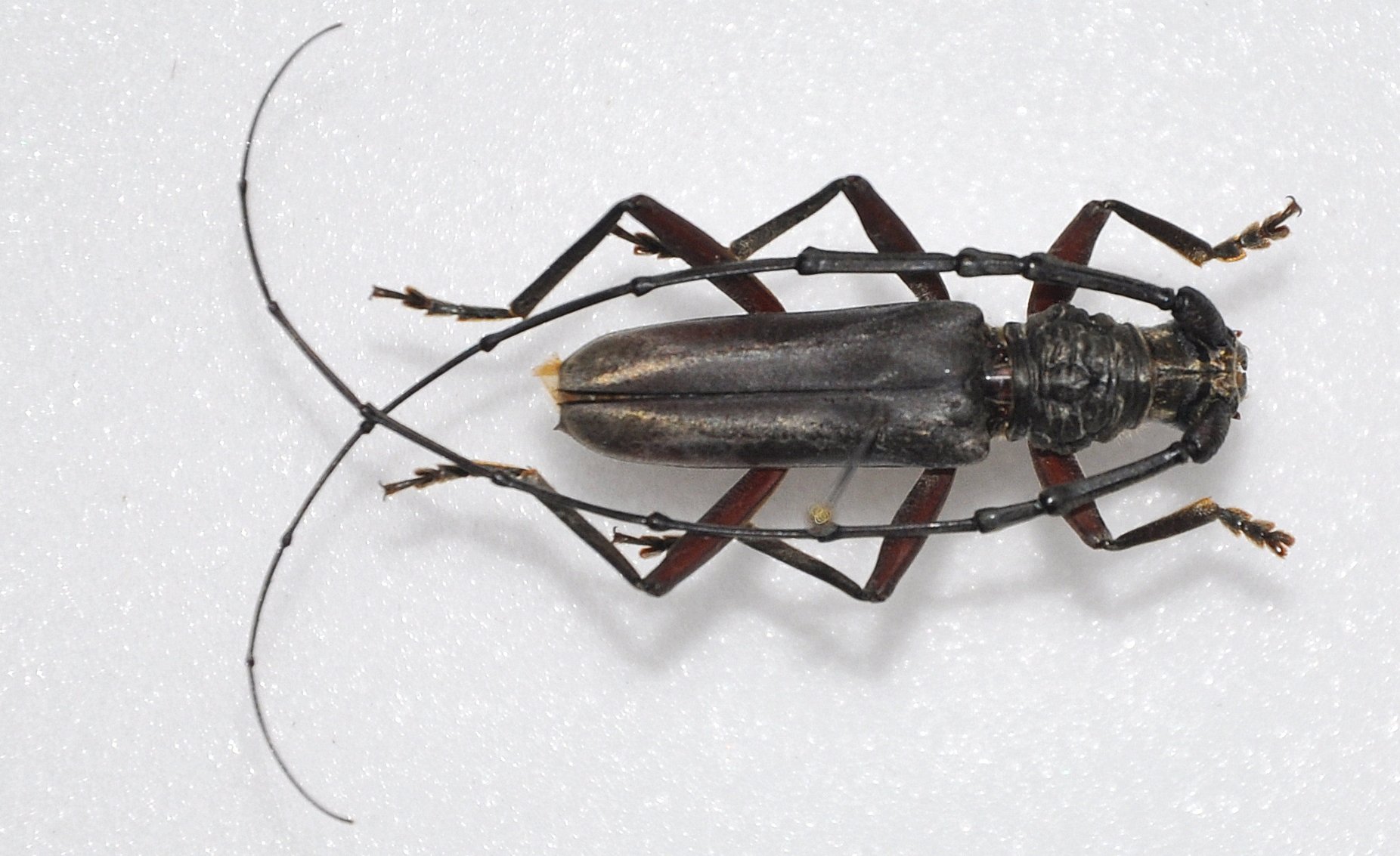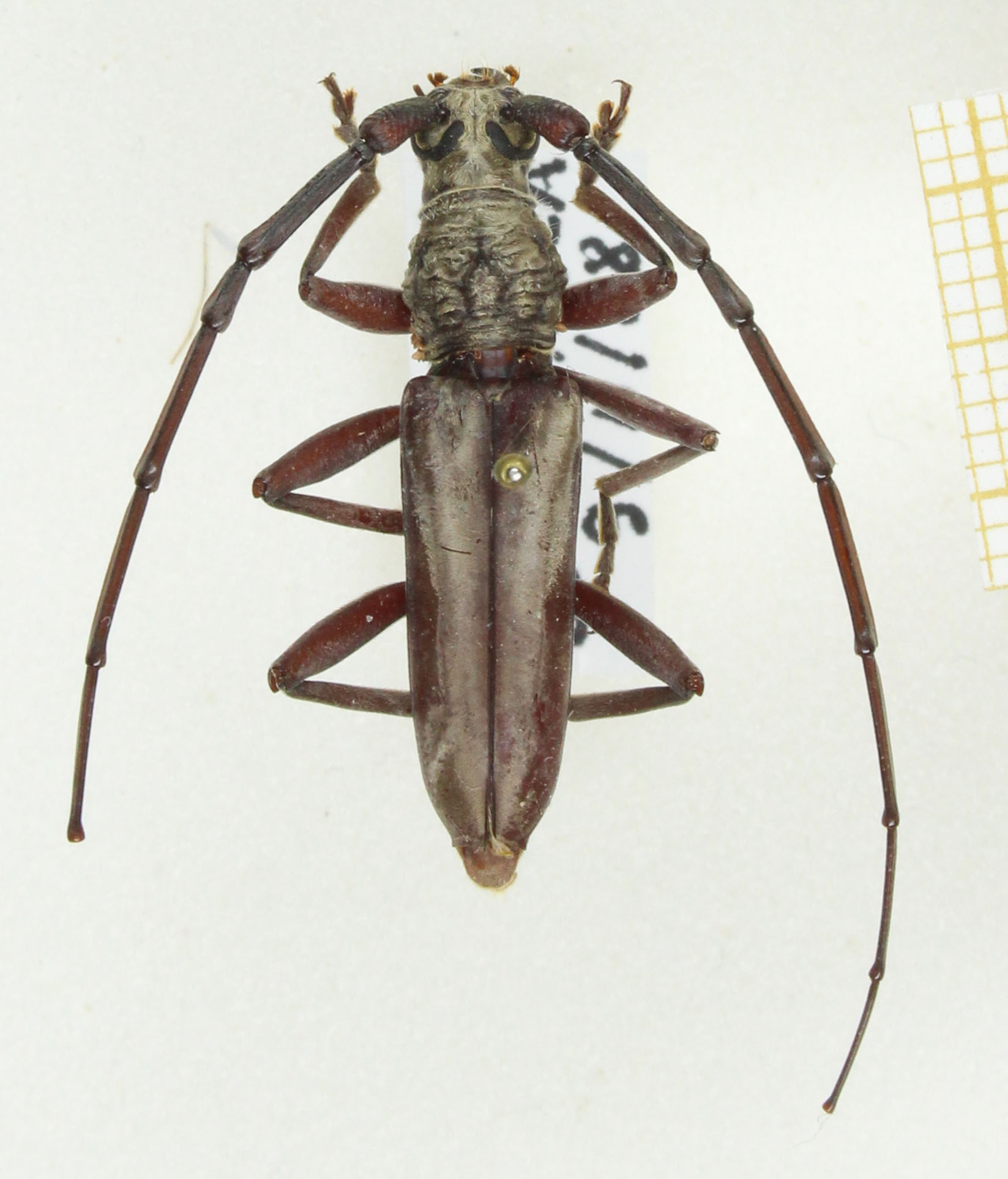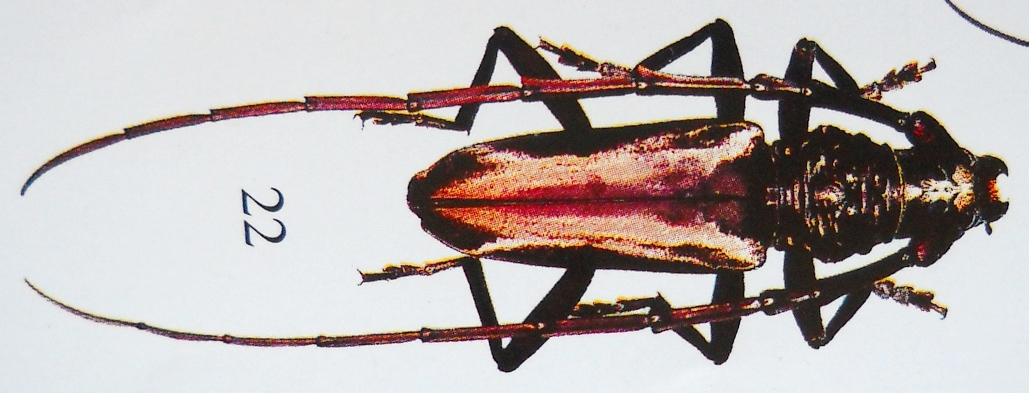| T O P I C R E V I E W |
| Pierre |
Posted - 28/02/2010 : 19:59:30

Pachydissus? Plocaederus?
27 mm, Cameroon |
| 12 L A T E S T R E P L I E S (Newest First) |
| Pierre |
Posted - 05/10/2018 : 12:36:24
bien sûr, Thierry, tu as raison. |
| africaone |
Posted - 05/10/2018 : 12:11:54
oui mais ne même temps si on prend les autres espèces illustrées comme "repère", il est possible de déduire que ce sont des irisations .... |
| Pierre |
Posted - 05/10/2018 : 10:48:41
Je suis actuellement en train de creuser la question avec quelques spécimens de curvivittatus suppémentaires en mains.
Une chose est sûre, la photo dans la publication d'Adlbauer est très mauvaise et induit à des erreurs importants quant à l'interprétation réelle de la coloration. La "bande courbée" qui est à l'origine du nom de l'espèce est exclusivement le résultat d'irisations, et pas du tout due à une quelconque coloration comme la photo pourrait le suggérer. |
| africaone |
Posted - 05/10/2018 : 10:19:59
maybe because the shiny bands on the elytra are curved |
| Francesco |
Posted - 05/10/2018 : 10:18:13
Interesting: thank you!
The anteanne seem constantly shorter and the apical spine obtuse (missing).
The colour.... very difficult to compare from photos... but why Adlbauer have described it as "curvivittatus"?
Very close taxa, however... |
| africaone |
Posted - 05/10/2018 : 09:58:36

256.71 KB
Here is a male from Ndoupé same locality as PT of curvivittatus.
I think that Karl's picture doesn't reflect the exact coloration of his type (that I didn't see).It seems to shiny and underexposed. |
| Francesco |
Posted - 28/09/2010 : 19:43:57
The species was really strange! So we have decided to describe it as Pachydissus evounai Haller & Vitali.
This new species has been published in Lambillionea CX (2): 263-266. |
| Francesco |
Posted - 01/04/2010 : 09:33:14

mmhm... I doubt it: Cerambycini are usually stable regarding body colouration.
That is the picture of the previously mentioned species. It is the only one with this kind of prothorax: its congeners have it more cylindrical and often much more finely striate on the disc.
I send you the keys to this genus (in German) on your personal email. Maybe it is new....
|
| Pierre |
Posted - 31/03/2010 : 23:46:21
Yes, Francesco, the coloration of this beetle is totally uniform without any kind of band or other mark. Could it be a chromatic aberration of the same species? |
| Francesco |
Posted - 31/03/2010 : 20:09:49
Actually, the general habitus is very similar to that of Pachydissus curvivittatus Adlbauer, 2002 from Cameroon.
Nonetheless, this species should be characterised by a bowed longitudinal band on reddish brown background... your specimen seems to me uniformly grey. |
| Pierre |
Posted - 01/03/2010 : 22:38:10
No, I can not find such a ridge, the surface of the femora is all over smooth and regular. |
| Francesco |
Posted - 01/03/2010 : 20:54:03
Neither of both: it might be a male of Derolus.
Can you check of the posterior femora have a fine longitudinal ridge on the ventral side? |


